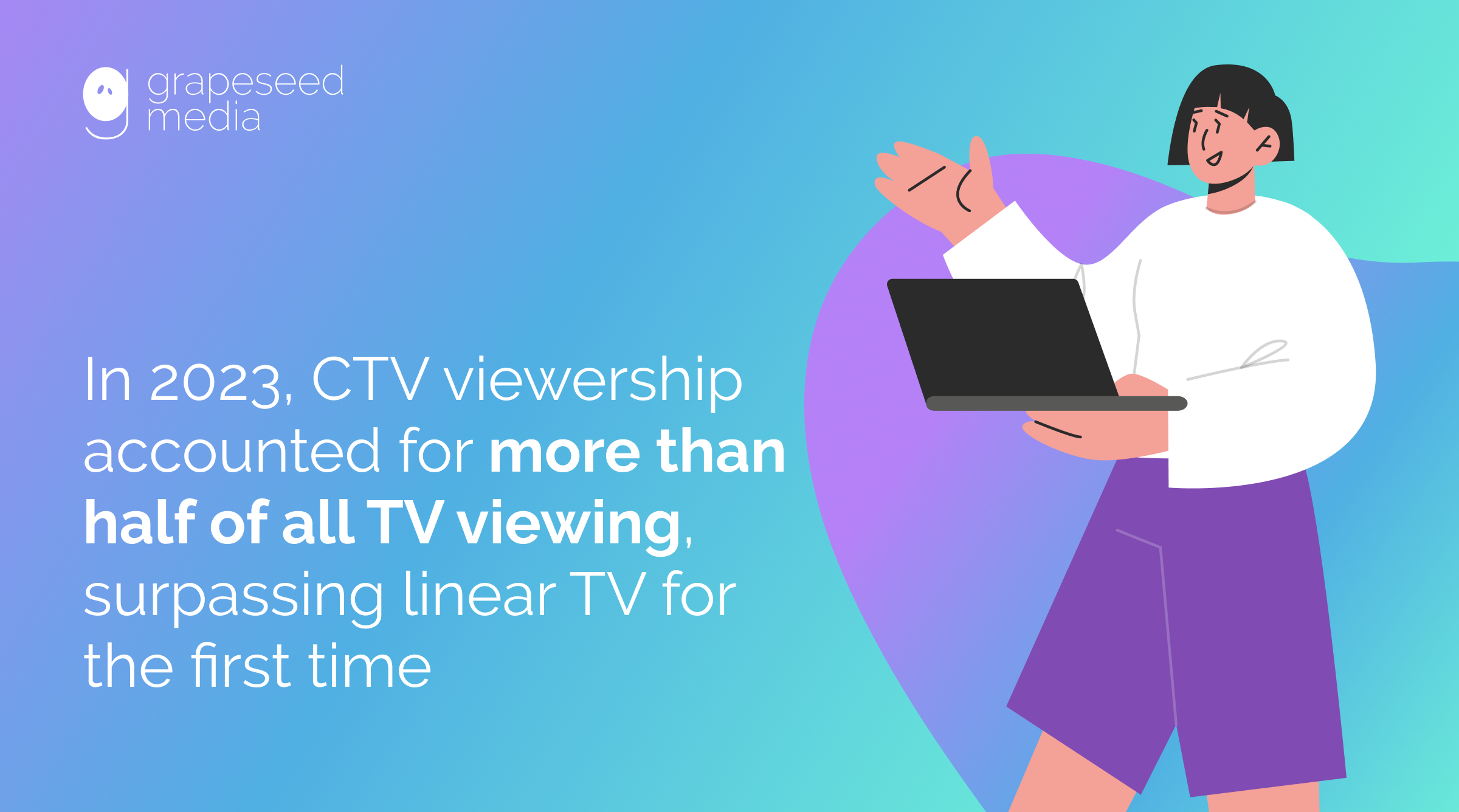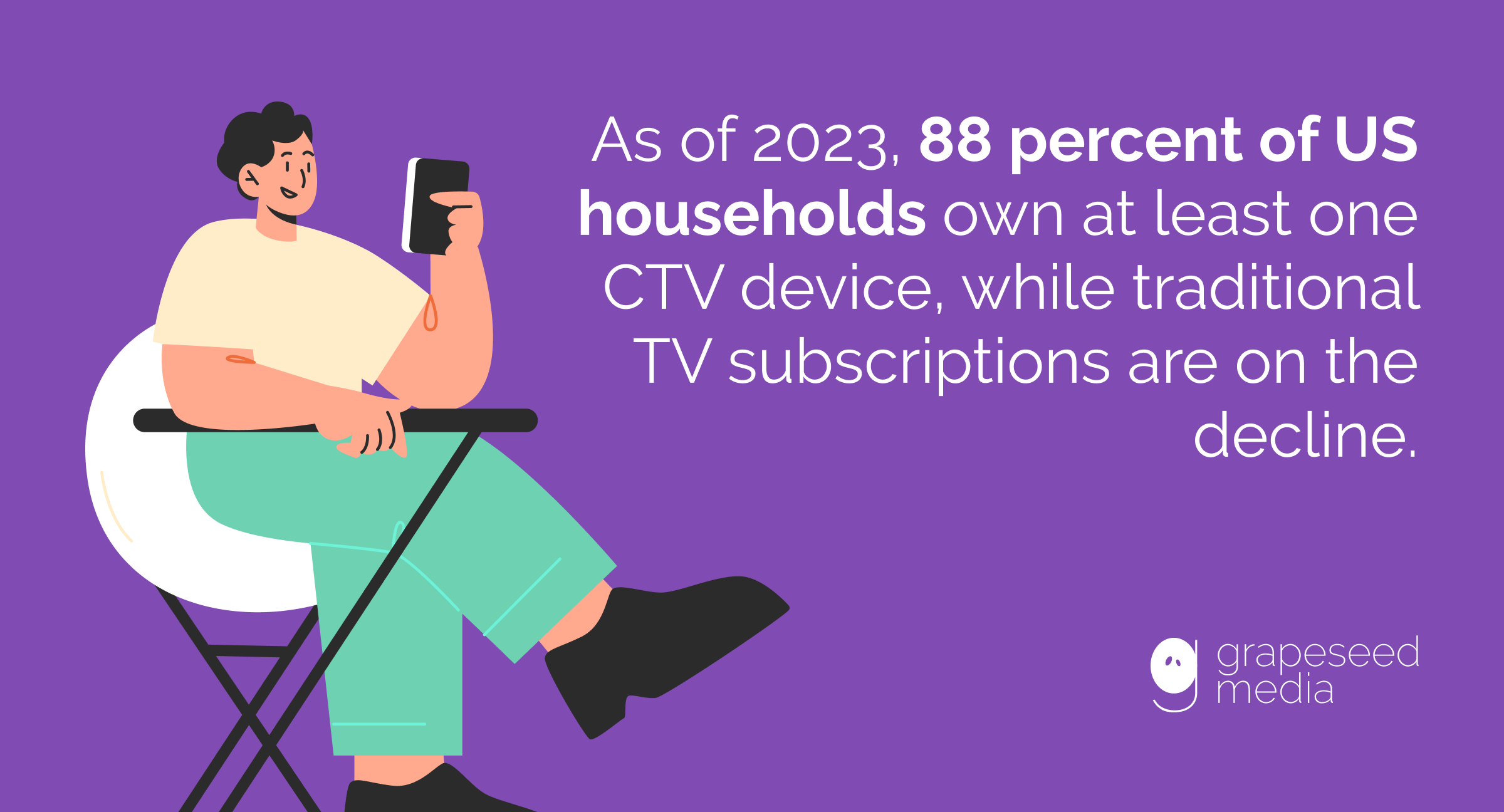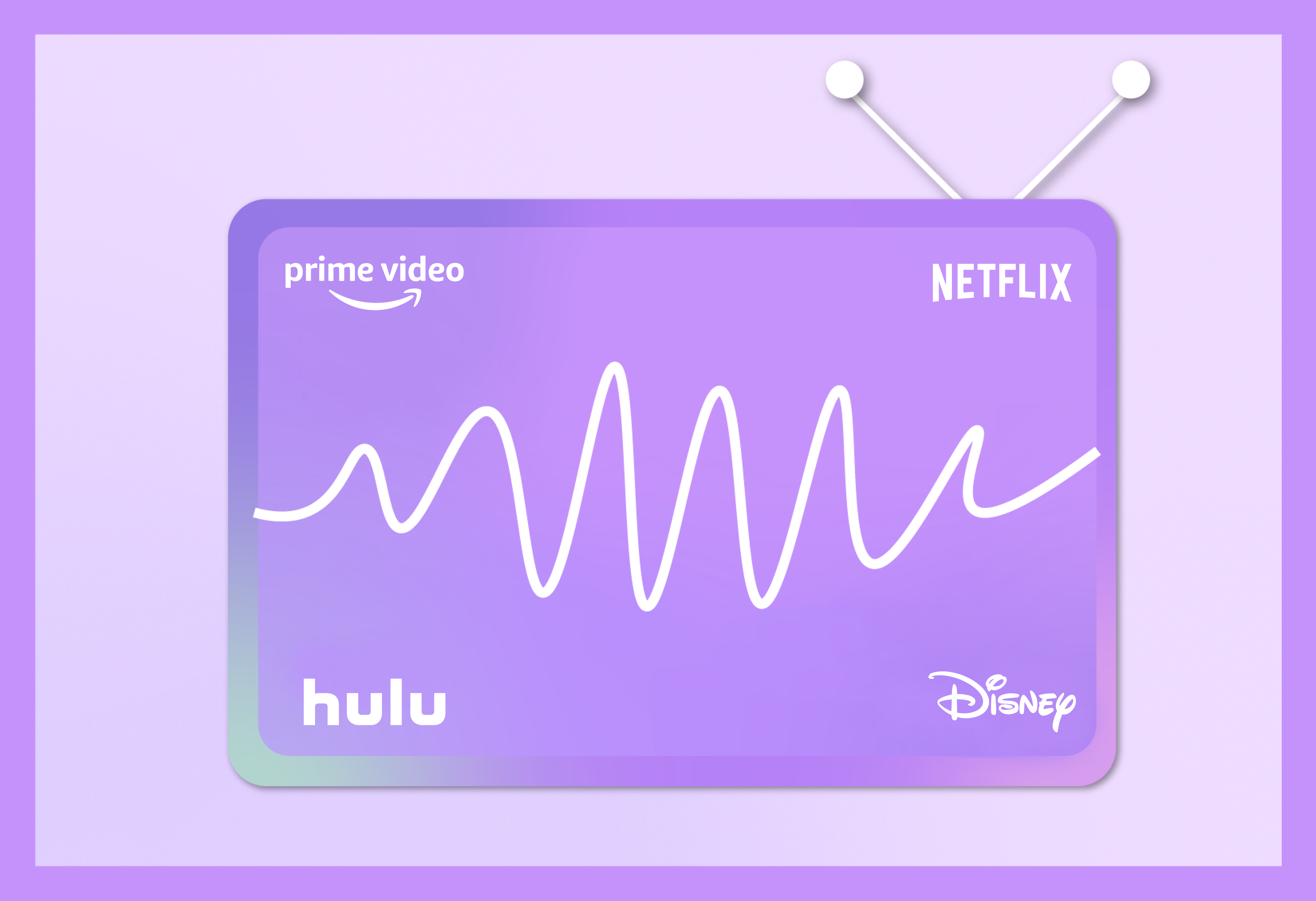Digital marketing is constantly evolving. The last decade has seen the rise of video content as a wildly popular digital advertising strategy — and it’s not surprising, considering 84% of consumers say they’ve bought a product after watching a brand’s video.

In 2023, CTV viewership accounted for more than half of all TV viewing, surpassing linear TV for the first time and creating new and exciting opportunities for advertisers.
When combined with the power of programmatic adtech, CTV advertising offers the possibility to expand your multichannel marketing strategy and reach more customers with highly personalized messages.
So let’s dive into what Connected TV advertising is, the types and benefits of CTV ads, and a few tips to help you get started.
What is Connected TV Advertising?
Connected TV advertising is a form of digital advertising for video content. CTV ads are a type of programmatic advertising that targets users of Connected TV devices based on demographic and behavioral data, such as age, gender, location, and interests.

As of 2023, 88 percent of US households own at least one CTV device, while traditional TV subscriptions are on the decline.
Additionally, the proliferation of CTV advertising-enabled devices is creating a new gold rush in digital advertising. They include:
- Smart TV — televisions with in-built access to the internet and streaming services such as Netflix, HBOMax, Hulu, and Amazon Prime Video.
- Gaming consoles such as Xbox, Playstation, and Nintendo Switch.
- Connected TV devices that can connect a normal TV to the internet, such as Roku, Chromecast, and Amazon Fire Stick.
What is the Difference between Connected TV Advertising and OTT?
Although the terms CTV and OTT are often used synonymously, there is a distinction between them.
CTV refers to the device used to connect to the internet and stream video content. This could be a smart TV, games console, or CTV device. CTV advertising refers to ads streamed through one of these devices.
OTT stands for over-the-top and refers to the delivery system or platform used to watch video content online, outside of traditional TV, such as broadcast, satellite, or cable.

Examples of OTT content providers include Apple TV, Disney+, Amazon Prime Video, Netflix, Paramount+, and HBOMax, among others. The content provided by these platforms can be streamed on mobile, desktop, or CTV.
OTT advertising is the term used for programmatic ads delivered via these platforms, which include CTV advertising. CTV is, therefore, a subset of OTT.
Types of Connected TV Advertising
By now, you might be wondering what the different types of CTV advertising are.
Some of the main ones include:
- Interactive pre-roll ads
- Home screen placement
- In-stream video ads
Let’s take a look at each in closer detail.
Interactive Pre-Roll Ads
This is a form of video advertising that appears before the video content starts. It refers to the commercials you see before your selected content.

These 15-30 second ads are usually unskippable and have a call to action, such as clicking through to a landing page when delivered in a clickable environment or a scannable QR code for non-clickable environments.
In-Stream Video Ads
These are ads placed during the video streaming content, which is why they are also sometimes called “mid-roll” ads.
Like pre-roll ads, in-stream ads are unskippable and usually have a call to action. Both pre-roll and mid-roll ads are a good way to recycle your TV ads.
What are the Benefits of Connected TV Advertising?
Below are four of the reasons why companies are turning away from traditional television advertising in favor of CTV advertising.
1. CTV Advertising Gives You Precise Targeting
CTV advertising gives you the ability to track who sees your ads with real-time metrics, allowing for precise retargeting.
This data-driven approach helps you optimize ad spend by targeting only your ideal audiences.
Some of the metrics you can track with CTV ads include:
- Video completion rate
- Click rate
- Device
- Platform
- Impressions by:
- Day of the week
- Date
Emerging beta technologies are allowing for content genre targeting such as Comedy, News, or Drama. As the ad tech in the CTV landscape evolves, we can anticipate this level of granularity to become more accessible.
2. CTV Allows for Cross-Channel Targeting
CTV advertising gives you the ability to retarget across different channels — including display, native, social media, digital audio, digital video, and paid search.
It also has a wide range of retargeting options, allowing you to reach a much larger audience than a traditional TV audience and with much greater precision.
A few of the targeting options available with CTV ads include:
- Cross-channel advertising
- Frequency capping
- Retargeting
- Lookalike audiences
- Device model
- Device type
- Time of day
- Day of the week
The ability to retarget across channels can help increase engagement. CTV ads complement your existing advertising strategy and help move potential customers through the funnel.
3. CTV Ads have Higher Viewability and Completion Rates
Thanks to the data tracking abilities of CTV ads, an ad only registers as viewed once the user actually watches it, not just when it loads.
The completion rate for standard pre-roll CTV is 94%, compared with just 69% on mobile and 74% on desktop.
Plus, the fact that they display on full-screen means you can rest assured that users are viewing them correctly.

4. CTV Advertising is Cost-Effective
CTV advertising is highly cost-effective, thanks to its targeted reach and measurable results. By enabling advertisers to specifically target audiences based on detailed criteria, CTV ensures more efficient use of ad budgets.
Additionally, the platform’s advanced analytics allow for real-time performance tracking, aiding in campaign optimization. The engaging nature of CTV ads often results in higher conversion rates, and the flexibility of budget options make it a financially savvy advertising choice.
- CTV Enables Automatic Content Recognition
Automated content recognition (ACR) is an emerging technology that addresses the challenges of a fragmented media landscape, helping advertisers identify and analyze content across various platforms and devices like smart TVs and smartphones.
It employs advanced algorithms and pattern recognition to identify the types of content being played on a device and returns the media’s metadata, along with recommendations on ad creatives to display.
ACR uses methods like audio and video fingerprinting, which generate unique fingerprints to identify media, and watermarking, which involves embedding digital signals in content before distribution, detectable by devices like smartphones and tablets. This technology enhances advertising strategies by improving targeting and delivering personalized, relevant ad experiences.
How to Get Started with Connected TV Advertising
Now you know what CTV advertising is and why you need to incorporate it into your marketing strategy, follow these three tips to help you get started.
1. Identify your Target Audience
Running a successful CTV ad campaign starts with identifying your target audience.
A few questions to ask yourself are:
- What’s their demographic — gender and age?
- Where do they live?
- What kind of content do they consume?
- What are their interests?
- What devices do they use?
- What stage of the customer journey are they at?
Answering these questions as fully as possible will help you be more precise with your targeting.
2. Decide Which Ad Creatives to Use
Video ads work best for video content, so try to avoid slideshows or static images. Choose between a 15, 30, or 60-second video placement for your ad, taking into consideration whether it’s pre-roll, mid-roll, or post-roll. In general, pre and post-roll ads are shorter, while mid-roll ads can be a little longer.
Your strategy might also involve serving different creatives over different OTT platforms to move your target customer through your funnel.
3. Choose the Right Advertising Partner
Partnering with a programmatic CTV advertising specialist — like Grapeseed media — allows you to leverage specialist CTV expertise and make the most out of your media buy.
We minimize red tape, take care of tech integrations, and eliminate low-value manual tasks so you can start running CTV ads as quickly and easily as possible.
Make Connected TV advertising Work for You
Harnessing the potential of CTV ads can be easy when you partner with experts in digital programmatic advertising like Grapeseed. We take the technical part off your hands so you can focus on how best to serve your clients.
If you want to learn more about how Grapeseed’s CTV ad experts can help you, get in touch with us, and we’ll get back to you within 24 hours.






